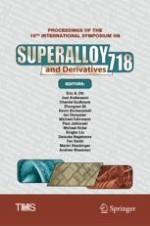2023 | Book
Proceedings of the 10th International Symposium on Superalloy 718 and Derivatives
Editors: Eric A. Ott, Joel Andersson, Chantal Sudbrack, Zhongnan Bi, Kevin Bockenstedt, Ian Dempster, Michael Fahrmann, Paul Jablonski, Michael Kirka, Xingbo Liu, Daisuke Nagahama, Tim Smith, Martin Stockinger, Andrew Wessman
Publisher: Springer Nature Switzerland
Book Series : The Minerals, Metals & Materials Series
